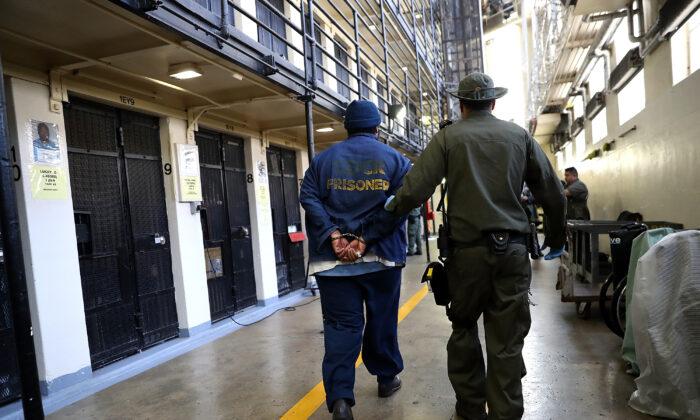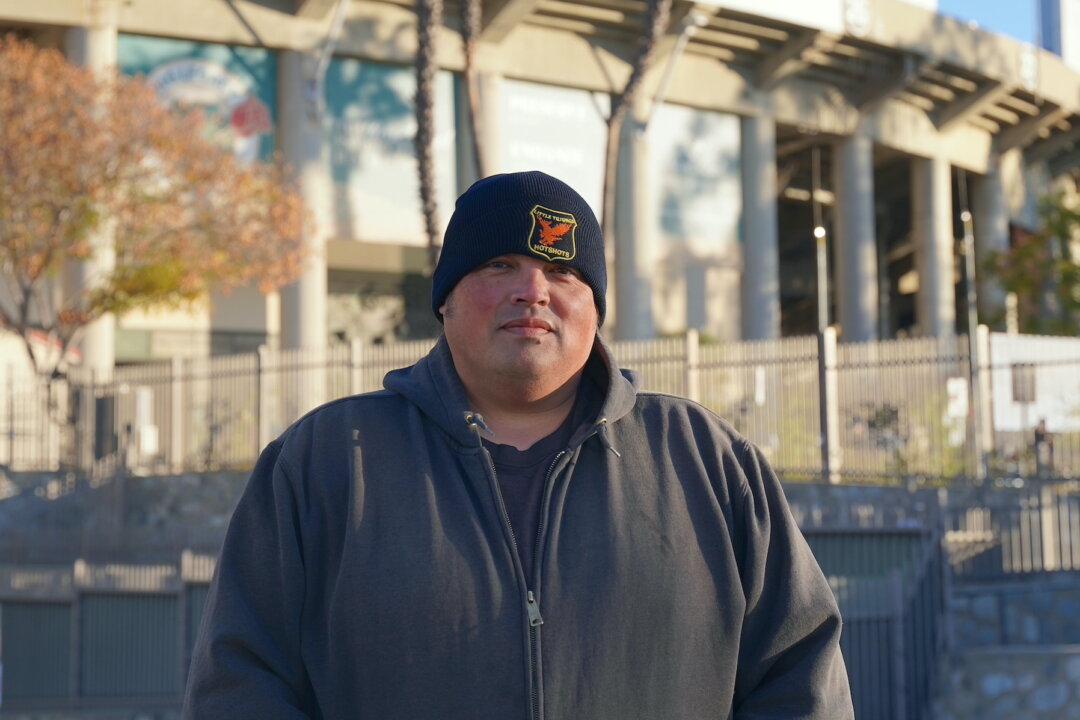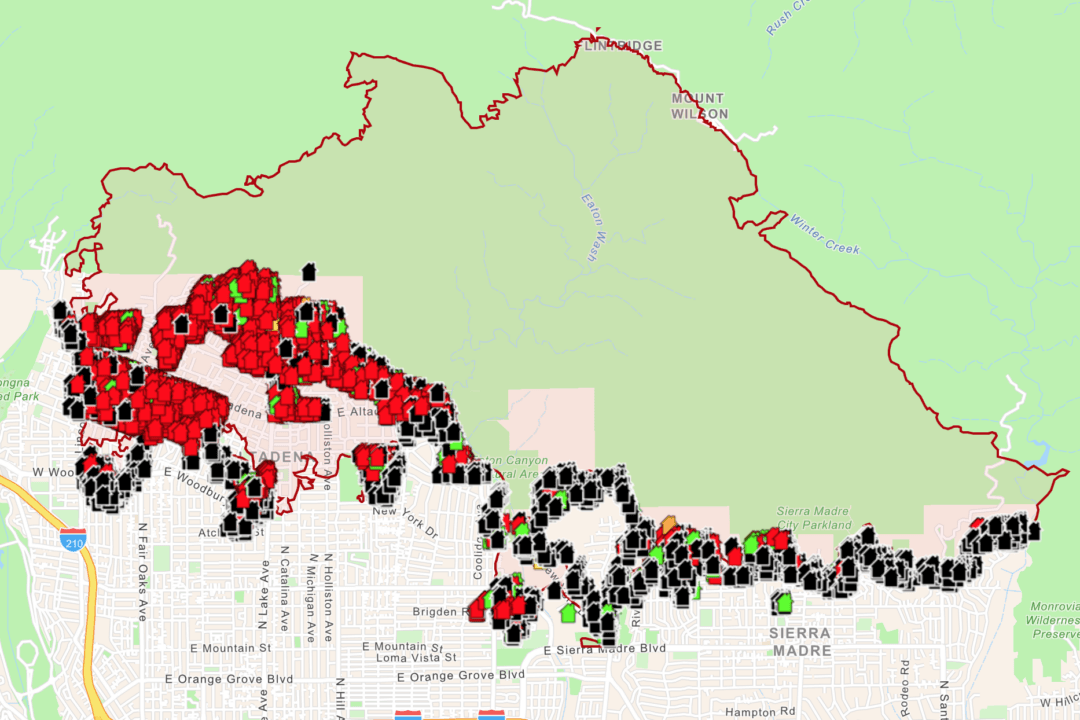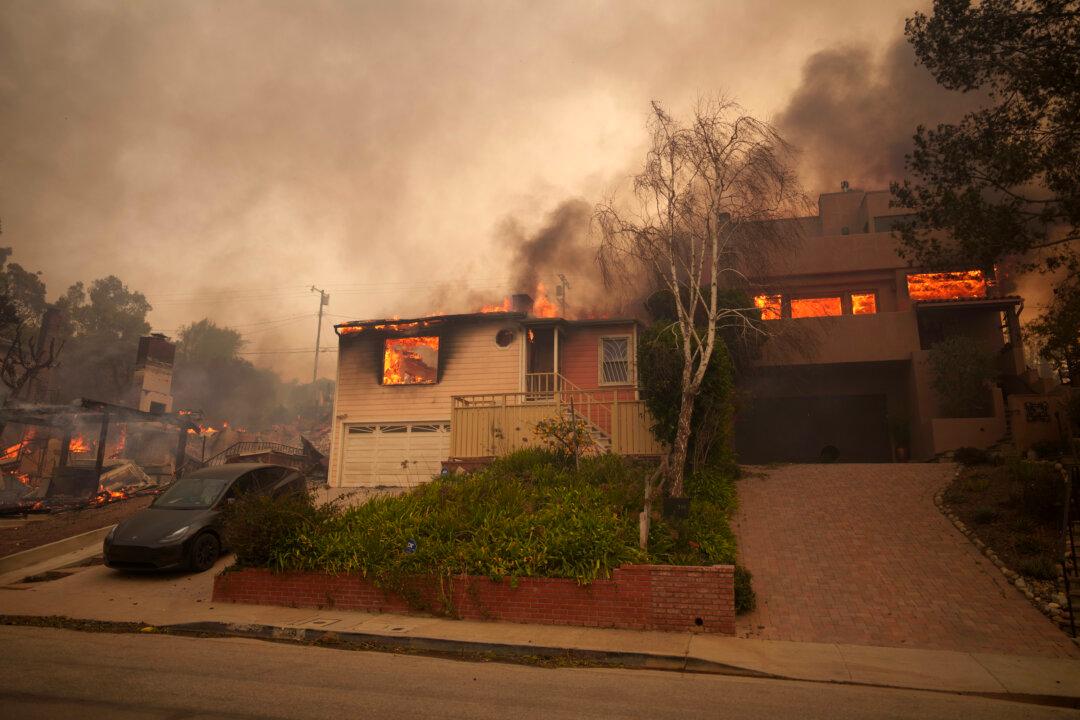A serial killer known as the “Sacramento Slayer” who hunted and sexually brutalized women for two decades died in prison over the weekend, according to the California Department of Corrections and Rehabilitation.
Morris Solomon Jr. was condemned to death in 1992 for murdering six women, including two teenagers, and sexually assaulting several others. Decades prior, he had been convicted of sexually assaulting multiple young women and was implicated in several other unsolved cases.

Solomon’s death leaves questions unanswered about additional victims—“now we’ll never know,” Harvey said, “because he’s taken it to his hell.”
And it raises new ones, about the impact of California’s decision to transfer death row inmates to general population facilities.
While the Corrections Department announced in an Aug. 2 press release that Solomon, who was 80, “passed away,” sources inside the California Health Care Facility (CHCF), the Stockton prison where he was housed, say he died because another condemned inmate beat him in the head with a metal object.
Like Solomon, the suspect, William Ramos, 72, was sentenced to death in 1992. Both inmates were transferred earlier this year from death row at San Quentin Rehabilitation Center to CHCF as part of California’s efforts to integrate condemned inmates with its general population at prisons across the state. Ramos received the death penalty for fatally shooting three women, but his sentence was recently commuted to life without parole.
“We were just waiting for it to happen,” a CHCF staff member who spoke on condition of anonymity said of the suspected murder.
“They’re no longer segregated, they’re getting the chance to interact with the general population, but some of them have vendettas—‘OK, now I’m out, what do I have to lose if I have an old debt to settle?’” they said.
A peace officer at CHCF who previously worked at San Quentin described an abrupt shift in how the department approached security for condemned inmates.
“When we were working with them [at San Quentin], when they’d come out, it’s with gun coverage, officers cuffing them up, these guys were considered dangerous,” said the officer, who agreed to speak with The Epoch Times on condition of anonymity.
“Now when they come here they’re instantly walking around, no gun coverage, and in day rooms.”
CHCF has manned gun towers at its entrance and exit points, along with an electrified fence, but staff members point out that there are no manned gun positions inside the perimeter, as San Quentin’s death row had.
“There is zero gun coverage for any of the housing units at CHCF,” said another correctional officer who agreed to speak with The Epoch Times on condition of anonymity, explaining that officers are equipped with only pepper spray, a baton or physical force.
“These options are not safe during major incidents such as an attempted murder,” they said.
Several CHCF staff who saw video of the attack said it was obvious Solomon died as a result of blunt force trauma to the back of the head: Ramos beat him with the metal arm of a wheelchair—both men had been in wheelchairs—in a day room while they were watching television, they said.
In an Aug. 6 email to The Epoch Times, the Department of Corrections later confirmed some details of this reporting, including that on June 26 Solomon had been involved in a “physical altercation” with Ramos and was transported to an outside medical facility for emergency care. Solomon returned to the prison July 29 and was pronounced dead in his cell Aug. 1.
The July 26 incident was referred to the San Joaquin County District Attorney’s Office, while Solomon’s cause of death is pending investigation by the county coroner’s office, the department said.
Hector Bravo, a former lieutenant with the Corrections Department, told The Epoch Times in an email that it was obvious Solomon had succumbed to injuries sustained in the violent attack, and said the public announcement that he had “passed away” was “an attempt to cover up the out-of-control violence” throughout the system.
Bravo added that the department documented Solomon’s death as “died of natural causes” on its internal computer system. The Epoch Times was unable to independently verify this information.
“This should be a stark warning to the citizens of California that the California Department of Corrections and Rehabilitation are literally covering up murders,” Bravo said.
Death Row Transfers
In 2019, Gov. Gavin Newsom signed an executive order imposing a moratorium on the death penalty, closing San Quentin’s execution chamber and granting all condemned prisoners temporary reprieves. The move was at odds with voters, who in recent years rejected two statewide ballot measures to repeal the death penalty.The Corrections Department in March began accelerating a pilot program begun in 2020 to phase out segregated death row units at San Quentin and the Central California Women’s Facility, transferring all condemned inmates to other prisons, where they would be integrated with the general population.
The department claims the policy is an effort to comply with Proposition 66, which requires condemned inmates to work to pay restitution to victims.
Currently, there are 632 condemned inmates in California. As of May 28, the vast majority of those have been transferred to other institutions, with the exception of 21 inmates in psychiatric housing, according to the department.
At the time, a department representative told The Epoch Times in an email that transferred death-row inmates would be designated “close custody” for a minimum five years, meaning their activities would be restricted and they would be “under constant and direct supervision.”
But former and current correctional officers at CHCF in Stockton say they are not equipped to handle what they say is escalating violence–including incidents such as the one that involved Solomon.
“CHCF is a dangerous place to work,” said the CHCF correctional officer, citing inadequate staffing levels, medical “overrides” that downgrade security for violent offenders and the integration of condemned inmates into the general population.
“The scary part is, if this was a staff member, we have zero gun coverage. We can respond, but what if the other inmates guarded the scene from the staff? The staff member would be dead,” the officer said. “I don’t understand what the department is thinking, allowing these condemned inmates to be in general population yards, just walking freely. That inmate [Solomon] was beaten so badly.”
The same officer said assaults, batteries, gassing and other attacks on staff happen “on a daily basis.”
The other CHCF peace officer pointed to an acceleration of the California Model as a cause of ongoing concern.
“The department is pushing this California Model without a step-down program or slowly going from one to the next—it’s like a sudden flip. Like, wow, these guys are just walking around now,” he said.
“It’s almost like we’re just waiting for something to happen to staff. I’m scared for this younger generation.”
And while some death row transfers are considered low-risk, the recent incident involving Solomon and Ramos, both old and ailing men, should be a lesson.
Homicidal Handyman
The 1980s and 1990s were a rough time in Sacramento, according to author Harvey, who recounts how the crack epidemic tore through an otherwise sleepy community.“Murder rates were high, there were crazy drug cases,” Harvey said. “It was really a horrific time to be living in Sacramento, and Sacramento was a nice quiet hometown place to be living in–raise kids, buy houses, retire. It’s not as fast or progressive as the Bay Area or Los Angeles or San Diego–it has its own hometown feeling.”
Harvey was a young reporter when he first heard about Solomon in 1990. Working with a Sacramento Police Homicide Detective, he dug into the case.
“I know at one point when researching the book, going through the court cases and looking at everything, they showed me some crime scene photos and I almost bailed. I was not going to write this book,” he said.
He reconsidered after a discussion with his mother. “She said that story has to be told, especially if it has something to do with the black community,” Harvey recalled.
At the time, there were few known African American serial killers. And, although Harvey says Solomon hunted women regardless of race, his victims were mostly African American girls and women.
More than half of his murder victims were buried in shallow graves, and nearly all had been bound; two were found with balled-up socks lodged down their throats, and four were nude or partially so from the waist down.
All of his victims were addicted to drugs, which Harvey said Solomon took advantage of. “That pretty much fueled his desire to hunt ‘throwaways’–people he knew nobody would care about. And he knew they wanted that drug.”
Solomon, who had previously been diagnosed as a mentally disordered sex offender and a sexually violent predator, was in and out of prison following convictions in a series of sadistic sexual assaults in the 1970s, all targeting young women.
“He was a monster. He slashed and burned in that community,” John Cabrera, the detective who worked with Harvey and has since retired from the department, told The Epoch Times. “There are 11 or 12 girls—we have seven bodies, and could only get him on six. He was going through them like water. And he never would have stopped.”

The detective at one point ran a missing persons unit, and was able to find a few matches with coroner’s reports—“we had all these bodies.” But he is still missing four girls to this day.
“He should’ve never been back on the streets in the 1970s,” Harvey said, pointing to “very weak” laws at the time.
“He killed this girl, she was a masseuse, and they found her remains in the Santa Clara Mountains. She had been dispatched to Morris’s house. But they couldn’t get him on this because they didn’t have enough evidence.”
After several attempts, Solomon agreed to sit for the first of three interviews with Harvey while on death row at San Quentin—on one condition. The young journalist spent all the money he had at the commissary and showed up with a tray of snacks.
“The first few minutes, that turned my stomach,” Harvey said, describing an intelligent and extremely calculated man, a pathological liar who knew how to talk, and an experienced carpenter who sized up the dimensions of the room they were in.
Solomon maintained his innocence.
“There’s no doubt this man did these murders,” Harvey said. “This is probably one of the most calculated murderers in California history, as far as I’m concerned. A lot of it was circumstantial evidence but it all makes a B-Line to Morris Solomon Jr., the homicidal handyman.”
The death of one of California’s most sadistic killers will bring solace to some, but it means there are questions that may never be answered.
“I really feel bad for the families, they need some type of closure,” said Harvey.
Cabrera, the detective, said he always thought Solomon might “find it in his heart” and tell him where the other four girls were.
He recalled one who was still missing.
“Her father was a retired Sacramento police officer. He called me for years, he said, ‘please don’t forget about my daughter.’ We haven’t found her to this day,” Cabrera said, adding that the father has since died.
Police working the case, Harvey recalled, strongly suspected the itinerant handyman of more than the Oak Park murders.
“From Louisiana to Arizona to California—cops told me there’s a busload of people Morris Solomon may have killed,” he said.







